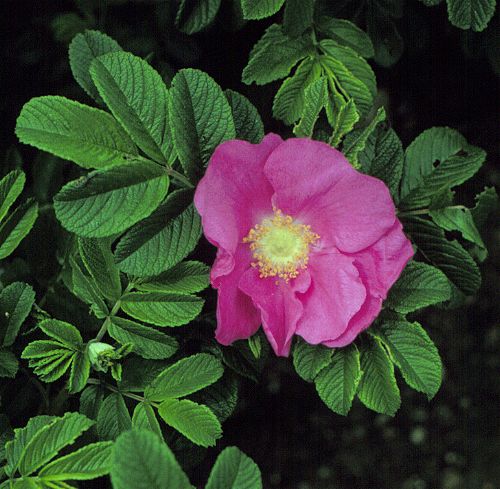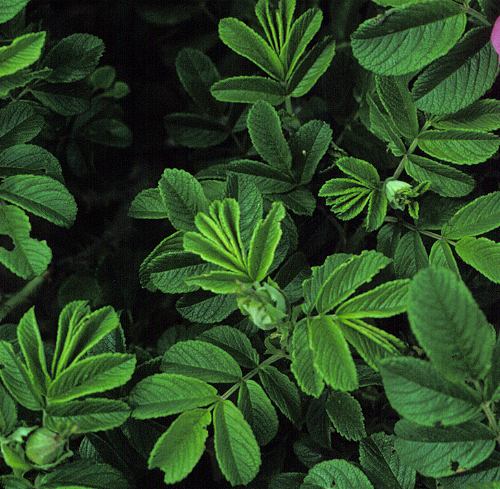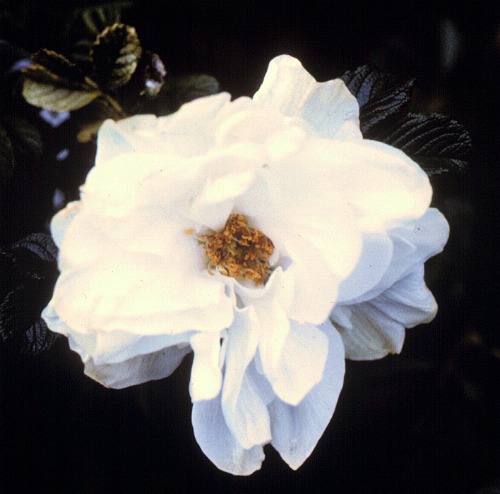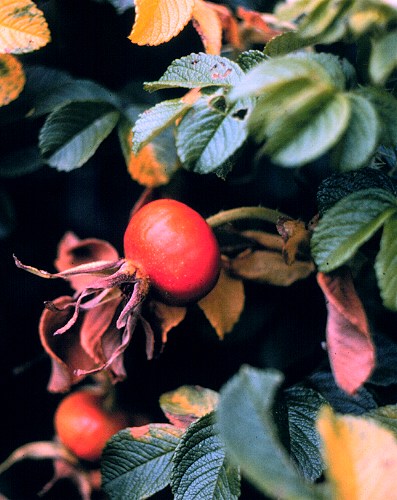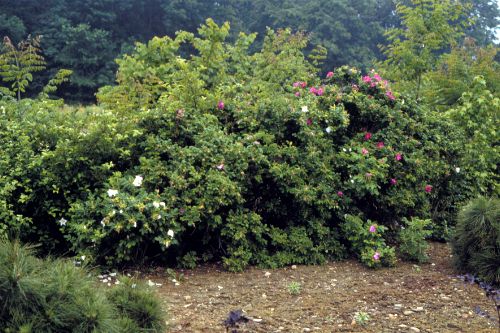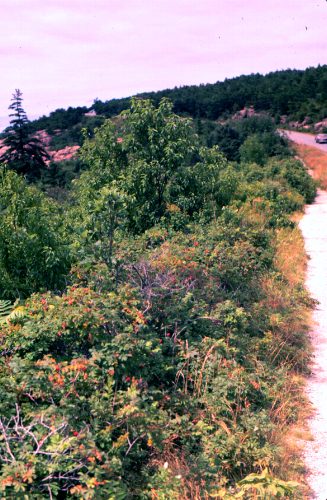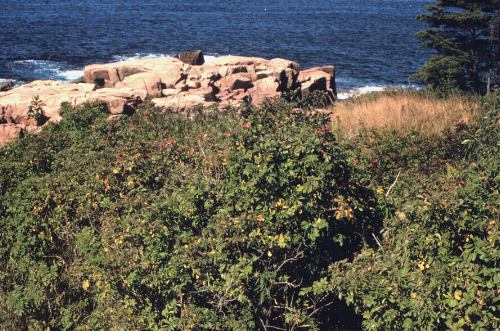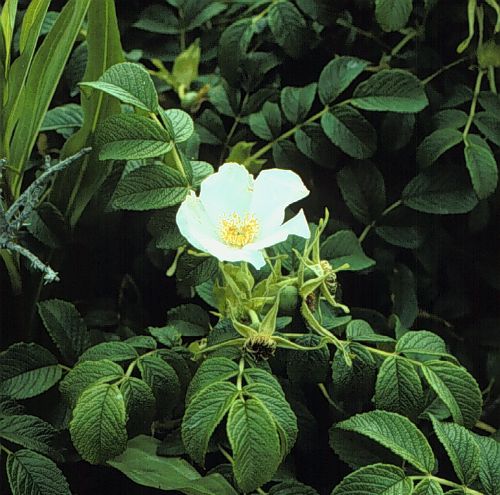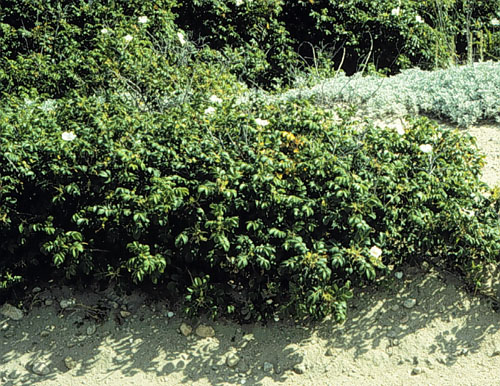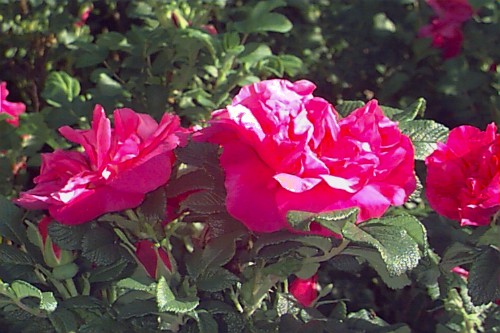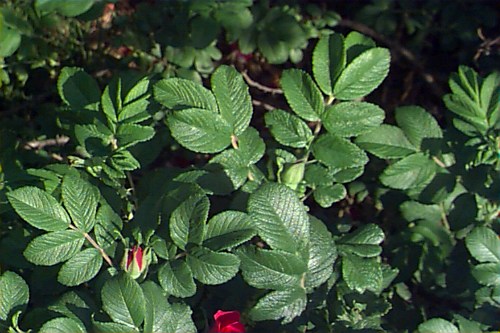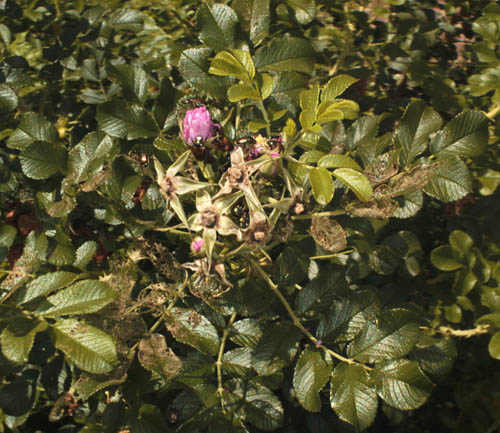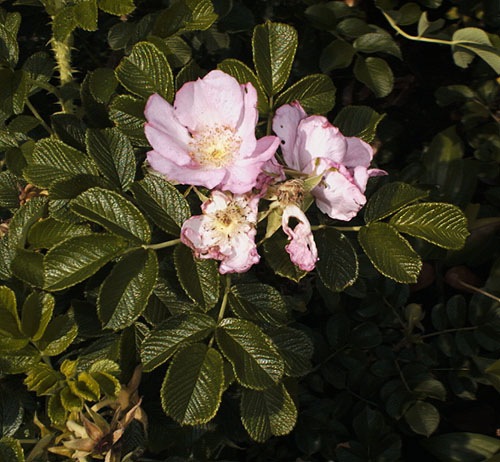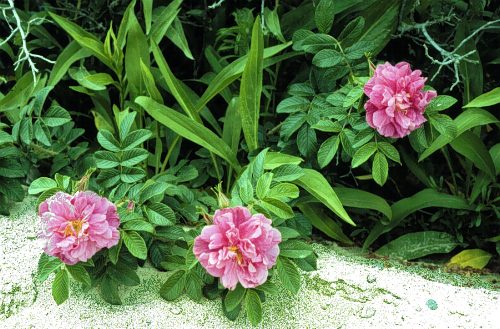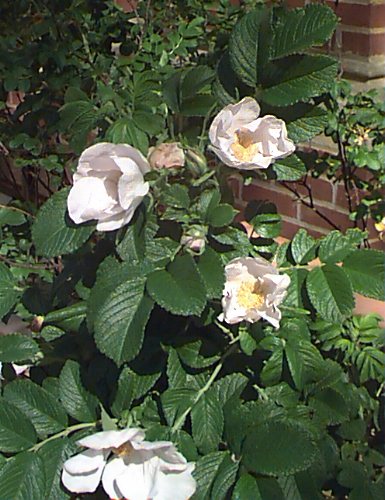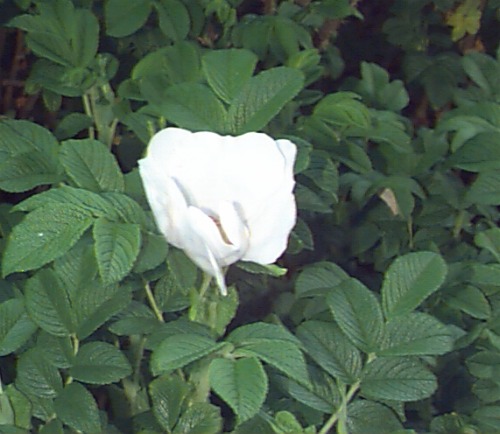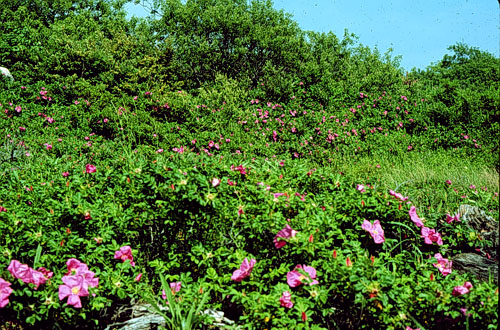Rosa rugosa
Rugosa Rose, Saltspray Rose
Rosaceae
ExpandHabitat
- native to northern China, Korea, and Japan
- hardy to zone 2
- Special Note: This species has demonstrated an invasive tendency in Connecticut, meaning it may escape from cultivation and naturalize in minimally managed areas. For more information, .
Habit and Form
- a deciduous shrub
- stout, upright, basal branching
- rounded crown
- suckers
- 4' to 6' tall
- equal spread
- medium texture
- fast growth rate
Summer Foliage
- alternate leaf arrangement
- odd, pinnately compound leaves
- 5 to 9 leaflets
- elliptic leaf shape
- serrate leaf margins
- pubescent underside
- rugose leaf surface
- medium green leaf color
Autumn Foliage
- yellowish
- not ornamentally important
Flowers
- white or pink flowers
- 2.5" to 3.5" across
- fragrant
- blooms in June through August
- borne in clusters or found singly
- showy
Fruit
- red hip
- 1" across
- can be showy
- matures in August
Bark
- stout green stems
- stems covered in prickles
Culture
- full sun
- easy to transplant and grow
- prefers well-drained, acidic soil
- pH adaptable
- salt tolerant
- prune tolerant
Landscape Use
- hedge
- for flowering effect
- salt tolerance
- banks
- sandy soils
- specimen
- for seaside planting
Liabilities
- blackspot
- powdery mildew
- aphids
- thrips
- mites
- suckers
ID Features
- covered in prickles
- alternate leaf arrangement
- red hip
Propagation
- by seed
- by cuttings
Cultivars/Varieties
More than 50 selections and hybrids of this species are known. Listed here are some of the more common selections.
'Alba' - This old-fashioned selection offers single white blooms over an extended period in summer. It develops good orange-red fall color and ample production of fruit.
'Alboplena' (also listed as var. albo-plena) - Very similar to 'Alba', this plant is noted for its double white blooms. It is resistant to leaf diseases and produces no hips (fruit).
'Blanc Double de Coubert' - Similar to 'Alboplena', this old cultivar offers semi-double blooms, healthy disease-resistant foliage and yellow fall color. It forms little or no fruit and may need rejuvenative pruning to correct legginess.
'Frau Dagmar Hastrup' (also listed as 'Frau Dagmar Hartopp') - One of the finest overall cultivars, this form offers profuse amounts of single pink blooms and large hips that appear early and persist. It grows into a dense, compact plant to 4' tall and offers unsurpassed disease resistance.
'F.J. Grootendorst' - An older selection that is not as highly recommended today due to disease problems, this plant offers repeat production of double, pink-red blooms.
'Grootendorst Pink' (also listed as 'Pink Grootendorst') - Not as highly recommended due to disease problems, this selection offers clustered small, double pink blooms on a 3' plant. It offers repeat flowering and less fruit production than other forms.
'Hansa' - This plant features semi-double purple-red, fragrant flowers and orange-red hips. The plant has disease-resistant foliage and good fall color, but it may become leggy as it reaches 6' tall.
'Jens Munk' - This newer selections offers semi-double blooms that are pink with a yellow center. The flowers are less fragrant and result in sparse fruit formation. It grows to 4' tall and wide and is popular among rose fanciers. It does not score as highly, however, in scientific trials.
'Therese Bugnet' - A hybrid cultivar, this plant blooms with double pink blooms that are fragrant. It produces little or no fruit and is slightly susceptible to leaf diseases. It grows to 6' tall with attractive red canes in winter. These stems are prone to attack by a girdling insect.
'Topaz Jewel' - Notable for its production of double yellow blooms over an extended period, this newer cultivar has enjoyed heavy publicity in catalogs. It appears to resist leaf diseases and grows to 5' tall and wider. It seldom fruits.
